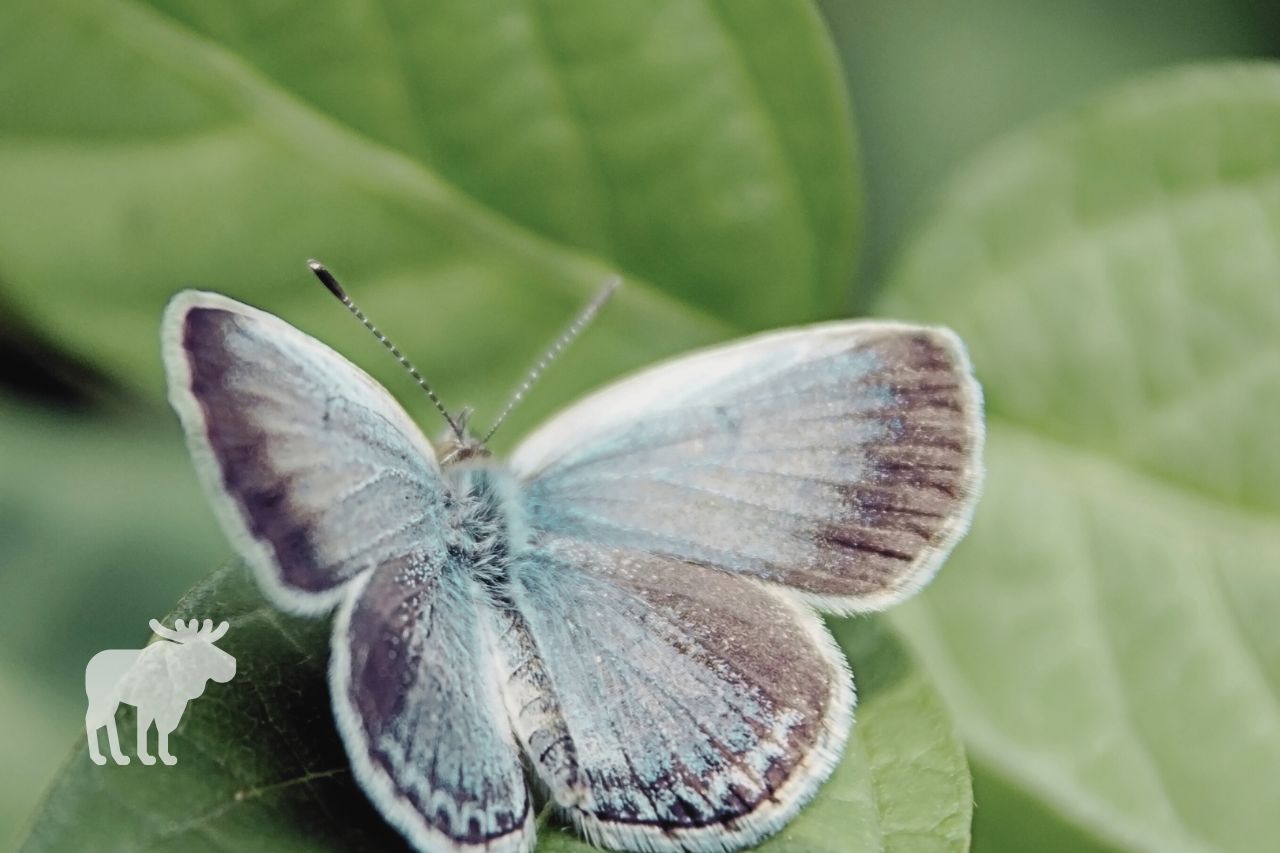A subspecies of the Melissa blue, Karner blue butterflies are unique and beautiful little butterflies native to parts of eastern North America. If you’re hoping to learn more about these butterflies, look no further! In this article, we’ll discuss environmental needs, habits and habitats, life cycle, and other Karner blue butterfly fun facts.
What You'll Learn Today
- 1. Karner Blues Live in Oak Savannas
- 2. Karner Blues Are Sedentary Butterflies
- 3. Karner Blue Larvae Only Eat Wild Blue Lupine
- 4. Karner Blue Larvae Have a Symbiotic Relationship With Ants
- 5. Karner Blues are Sexually Dimorphic
- 6. Karner Blues Overwinter in the Egg Stage
- 7. A Karner Blue Recovery Plan is in Place
- Conclusion
1. Karner Blues Live in Oak Savannas

Karner blue butterflies are found only in portions of the northeastern United States.
They are sometimes found in dry, sandy, open areas where their host plant, wild blue lupine, thrives in full sunlight. They may also be found in young wooded areas where the trees have not grown too thick or tall to shade out the lupine plants.
These areas of growth are known as oak savannas or pine bushes and are characterized by large but sparsely-growing trees. Because the trees are widely scattered over a large area, plenty of sunlight reaches the ground, allowing smaller plants and shrubs to flourish.
Check out this video to learn more about Karner blue butterflies and their habitat:
2. Karner Blues Are Sedentary Butterflies
You’ve undoubtedly heard incredible migration stories about some types of butterflies, such as the monarch. But, while monarchs travel thousands of miles each fall, Karner blue butterflies spend their entire lives close to home.
Particularly active Karner blues may travel up to a mile and a half in search of food or more desirable habitat. But they only do this out of necessity.
As a general rule, most Karner blue butterflies only travel about 600 feet from the place where they hatched.
3. Karner Blue Larvae Only Eat Wild Blue Lupine
Wild blue lupine is a pretty plant with complex, fan-like leaves and large blue flower stalks. These plants grow in grassy areas and other spots that receive plenty of sunshine.
Karner blue butterfly larvae rely on the leaves of the wild blue lupine for food. They don’t eat any other kind of plant.
Adult Karner blues are less picky; they will nectar on lupines and whatever other flowering plants are available.
4. Karner Blue Larvae Have a Symbiotic Relationship With Ants
Interestingly, Karner blue caterpillars work together with some types of ants. Their arrangement could be defined as a symbiotic relationship.
The ants offer protection from some insects that would otherwise prey on the caterpillars. In exchange, the ants feed on a sweet, nectar-like substance the caterpillars secrete.
5. Karner Blues are Sexually Dimorphic

Sexually dimorphic means that males and females within a species look noticeably different from each other. This is the case with Karner blue butterflies.
The males are more blue in color than the females. They have a silvery-blue color to their wings that reflects light; sometimes they are lighter in color, sometimes darker, but always, this silvery hue is present.
Meanwhile, females are more drab in appearance. Their wings are generally grayish-brown in color, without the silver tone males are known for.
Both males and females have black borders along the wings. Females have rows of tiny orange dots within these borders.
6. Karner Blues Overwinter in the Egg Stage
Many types of butterflies survive the winter in the pupa stage; others go into hibernation as adults. Still others migrate to warmer regions to escape the cold northern winters.
Karner blues, however, spend their winters as eggs.
With this in mind, overwintering Karner blues spend the majority of their lives inside their eggs. After several months in this stage, they hatch out and spend a couple of weeks eating and growing as caterpillars.
Adult Karner blues are near the end of their lives as soon as they emerge from the pupa. On average, they only live about five days–though some females live longer in order to lay the greatest amount of eggs.
7. A Karner Blue Recovery Plan is in Place
As you can probably tell from the above sections, Karner blues have highly specific environmental requirements. They do not adapt well to changes in climate or habitat.
For this reason, they are considered endangered and have been extirpated from large portions of their original range. They only remain in isolated pockets of land where the conditions are ideal to meet their needs.
Though their numbers have declined sharply since the 1970s, efforts are being made to save and restore these pretty butterflies.
In 2003, the U.S. Fish and Wildlife Service unveiled a strategy known as the Karner Blue Butterfly Recovery Plan. This plan’s intent is to identify ways of encouraging Karner blue populations and to restore their habitat.
Conclusion
Karner blue butterflies are small insects that need specific living conditions and rarely travel more than a few hundred feet from their birthplace. Their larvae have symbiotic relationships with some types of ants, and the adults rarely live more than five days after emerging from the chrysalis.